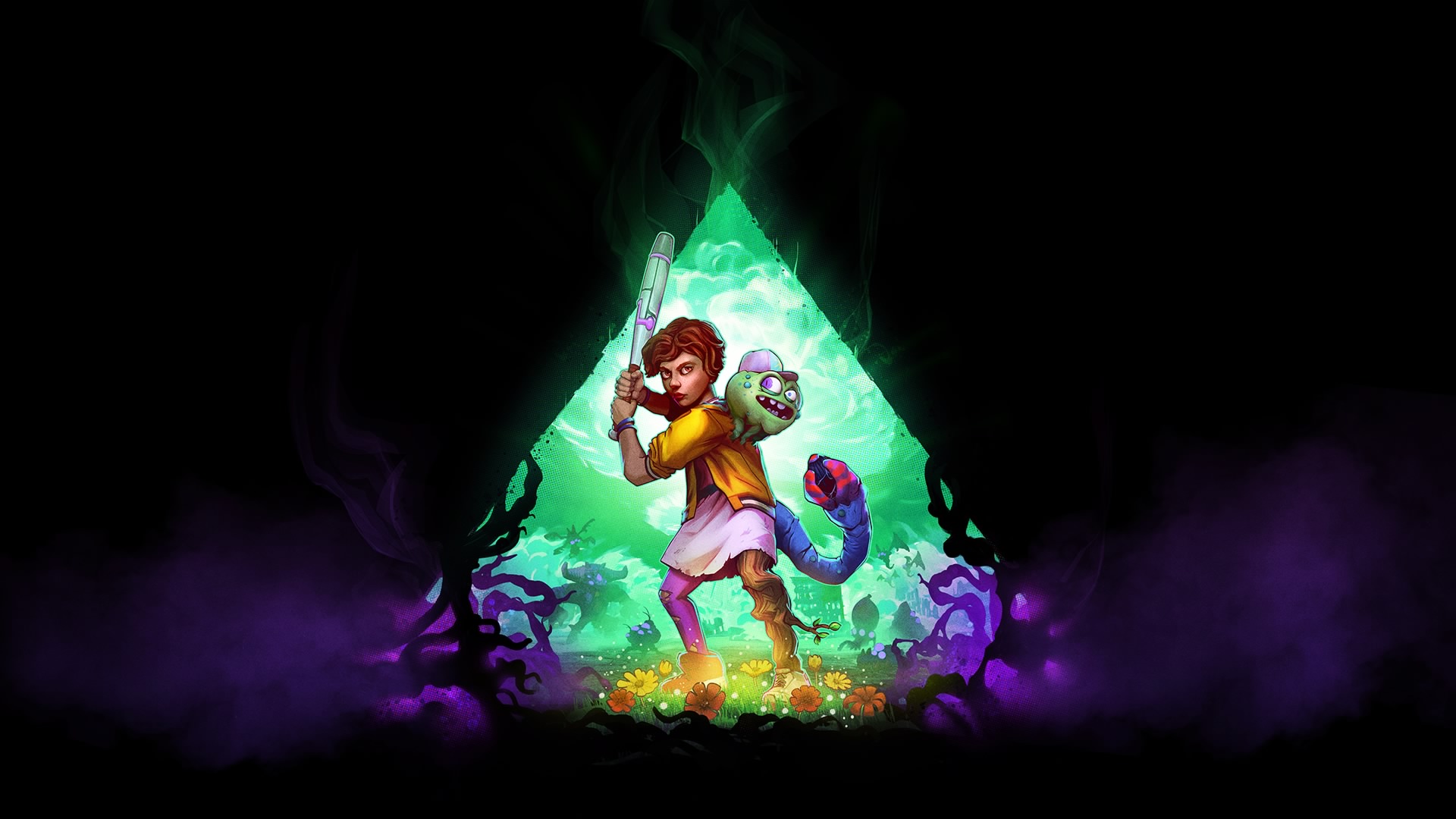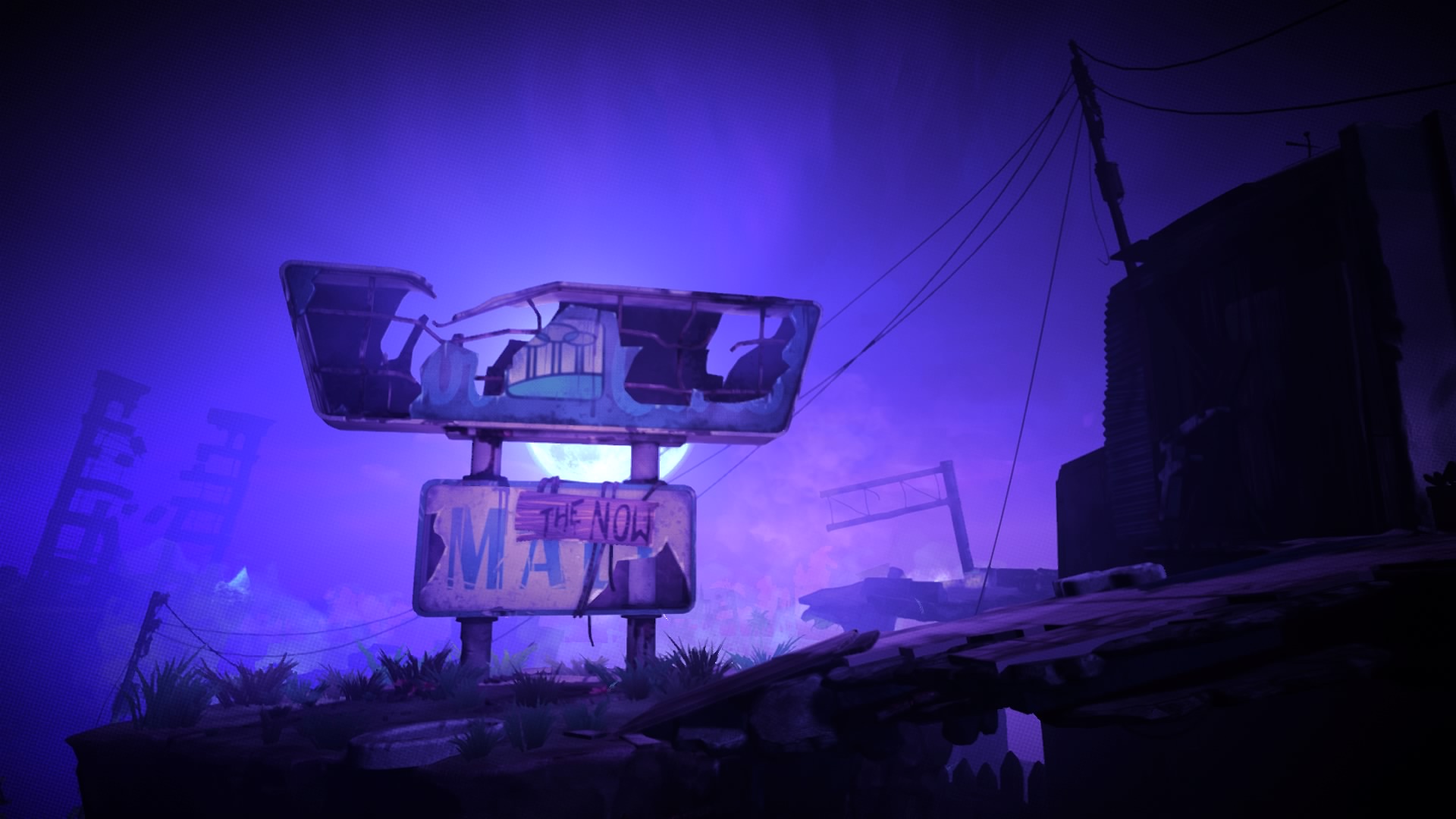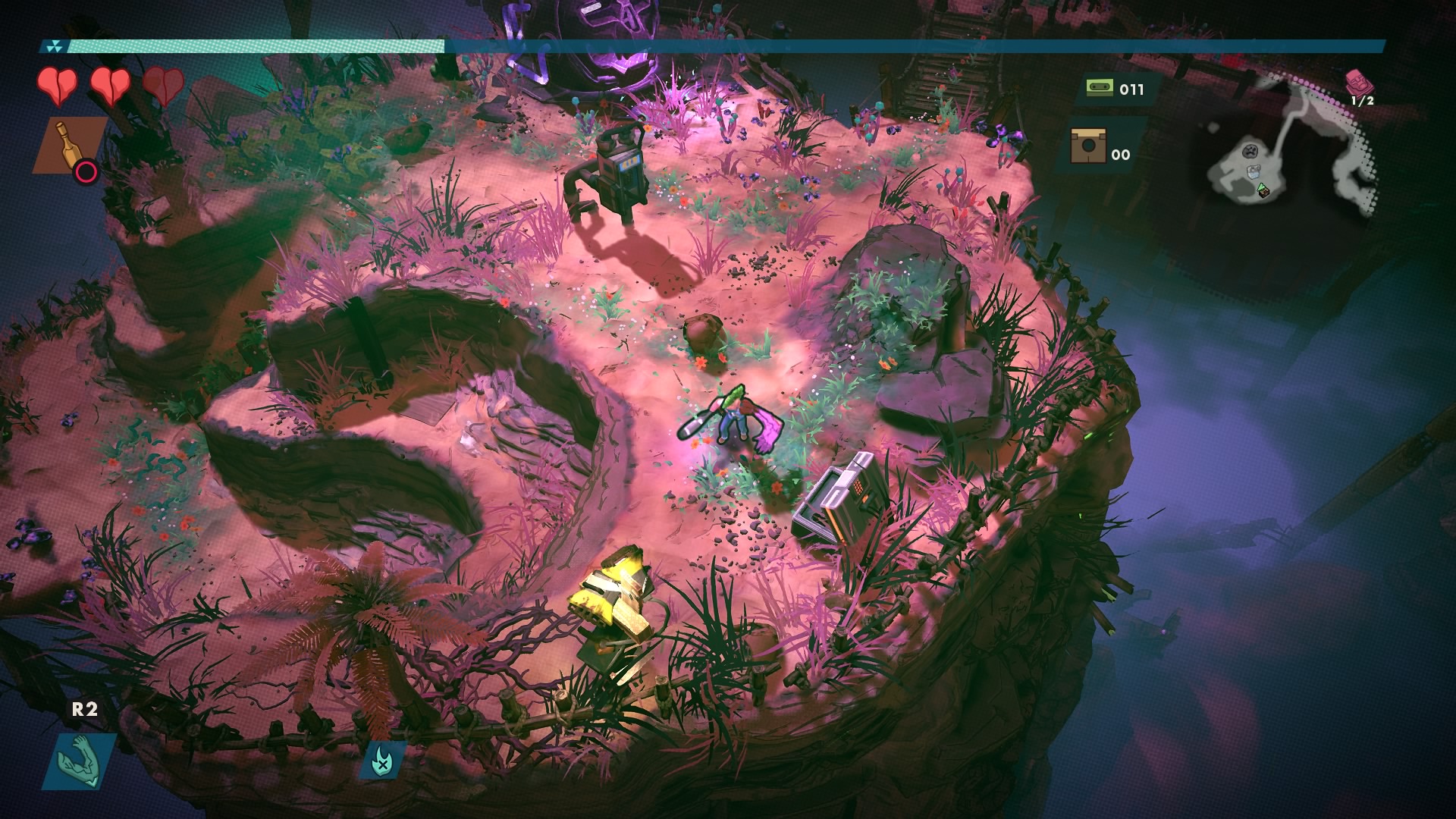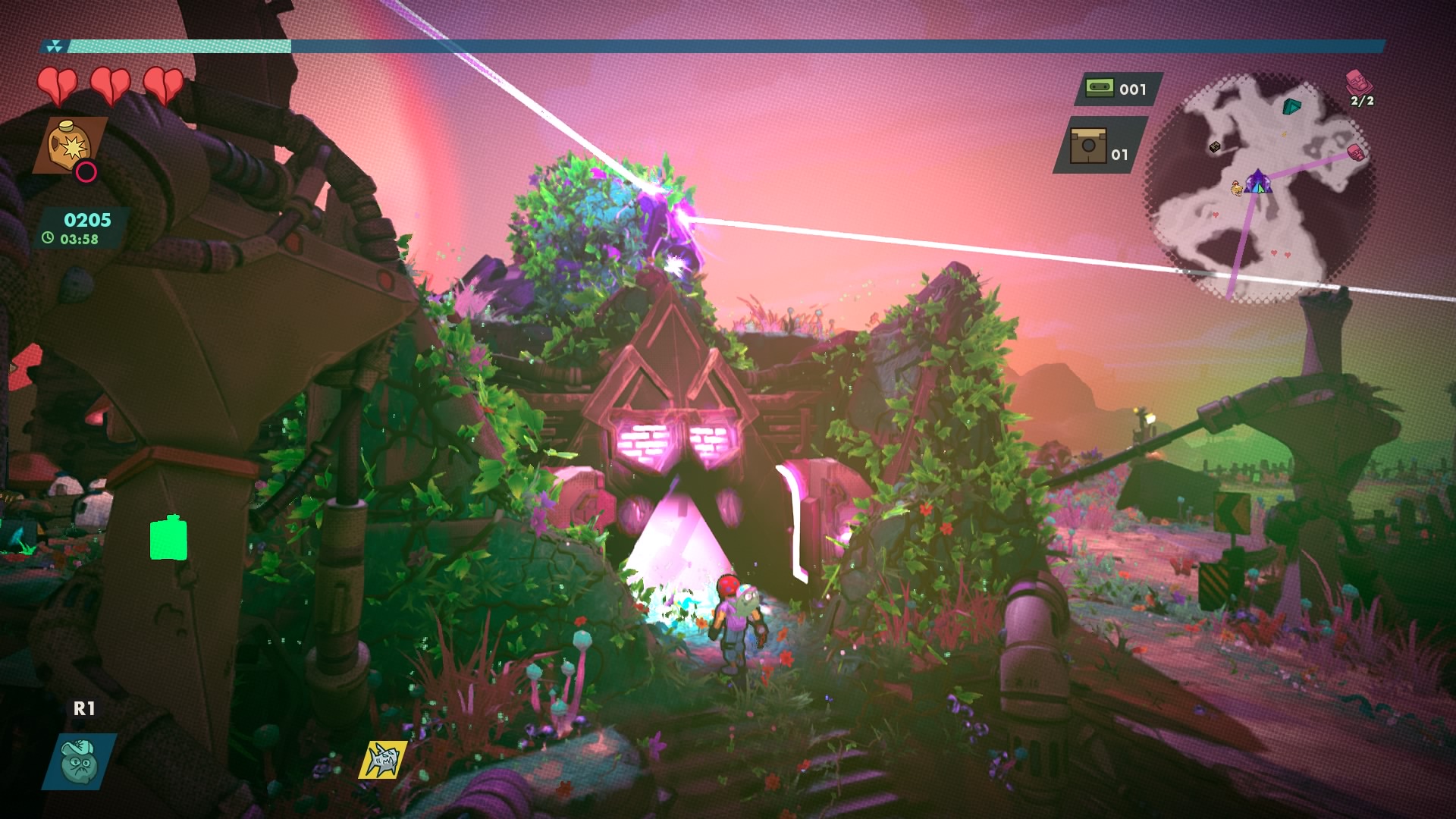Double Fine, the studio behind the infamous Psychonauts and many other charming, beloved titles, revealed an all new IP last year that looked, well, RAD.
As short and funny as it sounds, RAD introduced itself as a roguelike starring a group of kids tasked with bringing hope to a decaying world.
Using a top-down perspective and boasting a cartoonish art style, it is exactly as what you would expect from many of the recent entries in the subgenre. But there’s a distinct personality to it, something that sets it apart.
As the chosen savior, you’re granted with the ability to absorb rads from the world, thus allowing your body to mutate in hilarious and terrifying ways.
See, the world has went through not one, but two apocalypses, and a the machines in charge of survival are beginning to fail.
The Menders, a group of people that attempted to put the irradiated and broken pieces back together, naturally failed in their task. And now, someone needs to get out to the wasteland (called Fallow) in search of a new power source.
After choosing between a group of brave characters — something that does not affect gameplay but merely aesthetics — you jump into a procedurally generated world, wielding nothing but a baseball bat, a simple set of controls, and your guts.
Here we go.
Is There a Doctor in the House?
Familiarity strikes at first.
As expected, your character can do basic attacks, jump, and combine the two for either an aerial kick or a mid-air stomp. Hold the attack button, and they will charge a special ability that spins around, hitting everything that gets close. Dodge is also an option. And that’s pretty much it.
You begin fighting against a couple of small enemies — horrifying, yet cute creatures, each with a unique attack pattern. There’s a fungus-like monster that releases a deadly gas when you get close, while others fly around and attack at a distance. Variety is short in scope during these first few moments, and so are your attacks, which makes the initial experience a bit shallow.
But as soon as you gain a level in RAD, everything changes.
As you progress, a random mutation attach itself to your poor youngling, adding either a passive skill (such as immunity to acid pools or fire) or a completely new ability. Wings! A massive arm that can be used as a boomerang! Crab legs! A small creature that clings to you back and shoots at enemies! Spiders — with your head on them!
The array of possibilities is ridiculous, and I haven’t seen all of them yet. Only two abilities can be equipped at once, however, so you won’t become an unstoppable force like in something such as The Binding of Isaac. There’s a small sense of experimentation and building the best combo, but it’s not the focus here. Abilities are supposed to help you survive in the wasteland, either with a combat advantage or by allowing you to explore an otherwise inaccessible area.
Once I got the wings, clearly displayed on my character after an intense close-up animation, I had two ways of putting them to use. On on hand, they are perfect escape tool, helping me take the high ground and glide to someplace safe in a short, but acceptable distance. On the other, they are the perfect traversal tool, helping me fly across a massive gap where once lied a bridge, exploring a different part of the map altogether.
A Green Sea of Nostalgia
It’s clear that RAD‘s mutations and environmental design get along, but the game’s procedural generation tends to get in between.
Of course, we aren’t talking about a metroidvania, where wings would probably be used to unlock entire new areas, for example. It’s just that most of the time, the random mutations can keep you from breaking through a crack in the floor or exploring a corner of the map.
Despite that, everything else comes down to skill. I might feel betrayed for a brief moment, but a miscalculation in the next area might throw me back to the hub with a different run waiting for me. It’s a fairly small one, but it has everything you need. A local vendor, NPCs that give you useless chatter, and others that ask for an specific item. There’s also a Pac-Man arcade machine since, well, RAD is being published by Bandai Namco.
In terms of on-going progress, there are unlockables that can you obtain after each run depending on your score, from new abilities to pick-up items and potions.
You can also store money (represented as cassettes) in a local ATM found in the small world hub, which has a vendor, NPCs that provide useless chatter, and a Pac-Man arcade machine since, well, RAD is published by Bandai Namco. Your savings can either be withdrawn on your next run or during your ventures in the wasteland if you find a machine out there.
Humor is also a big part of the game’s charm, but RAD also leans on nostalgia to tell its story, and does so in a fantastic way. Jean vests with spikes over the shoulders, CRT TVs used as decorations, keys disguised as floppy disks. There’s a lot to love in RAD aside from the mutations and gameplay, and I felt compelled to keep helping this group of rascals again and again.
Pros:
- All sorts of mutations to have a laugh with
- A compelling world that feels worth fighting for
- Sense of nostalgia all around
- Humor is subtle enough to be a pleasant companion
Cons:
- The procedural aspect gets in the way of environmental design
- Barebones feeling during the first few moments
I’ve played more roguelikes than I can count, but I’ve only seen the end of a mere few of them. According to RAD‘s handy and stylish notebook — which displays everything from unlockables to brief backstories for each enemy and each character — there are six different endings waiting for me.
I hope that none of them are bad, since the group of kids have started to grow on me; I could trust them with whichever post-apocalypse mission we’ll find ourselves into in the foreseeable future.
It’s not the first time that we see this scenario displayed in a game, it’s just that RAD actually took the time to present me with a world that I want to save.
Leaving a green path behind me, I watch the flowers grow as I wait for my arm to come back to me, boomerang style.
[Note: A copy of RAD was provided by Bandai Namco for the purpose of this review.]













Published: Aug 14, 2019 08:45 pm